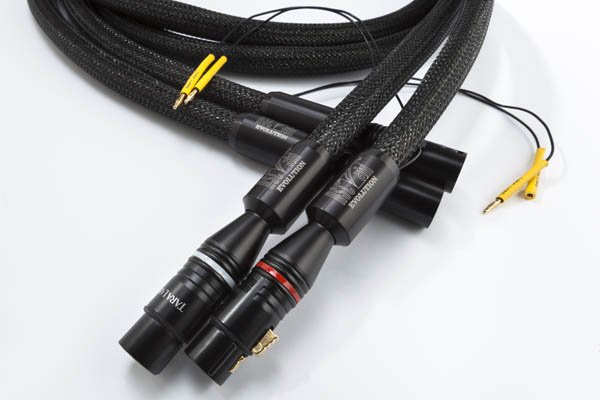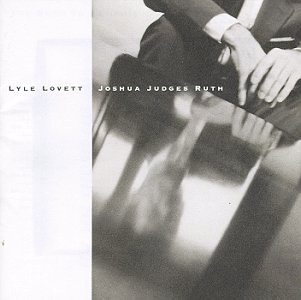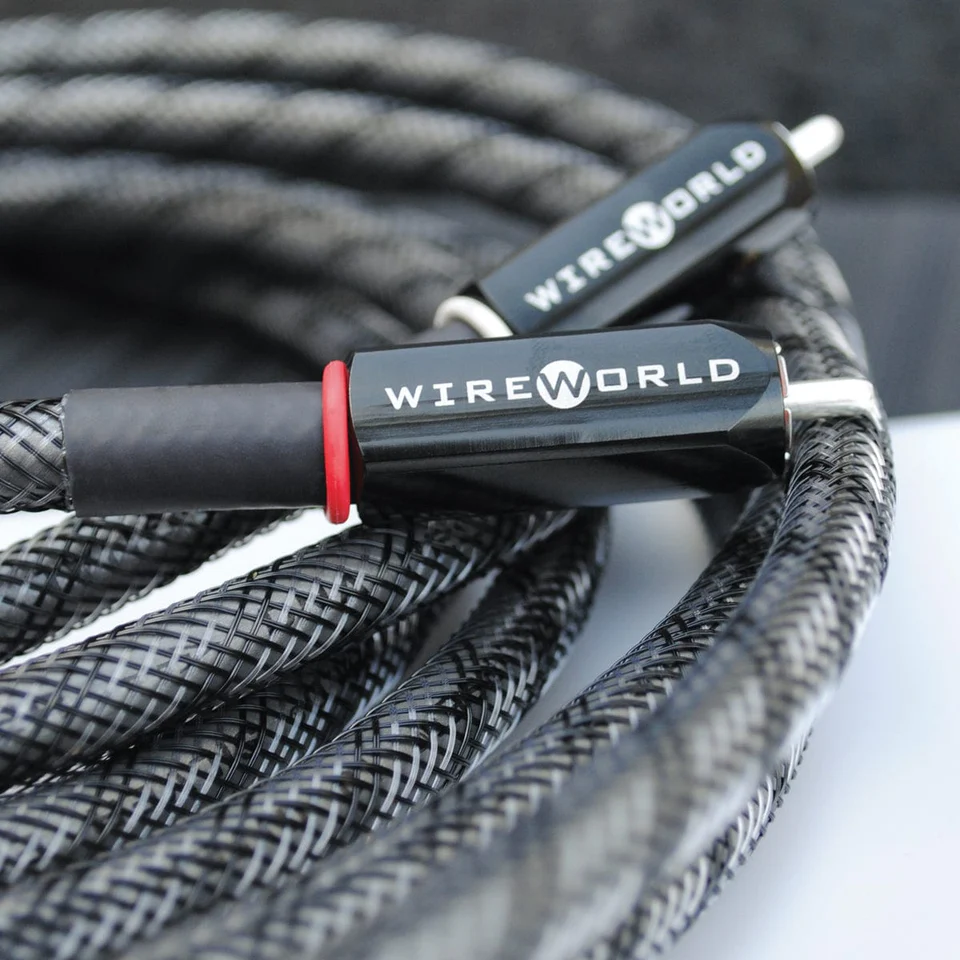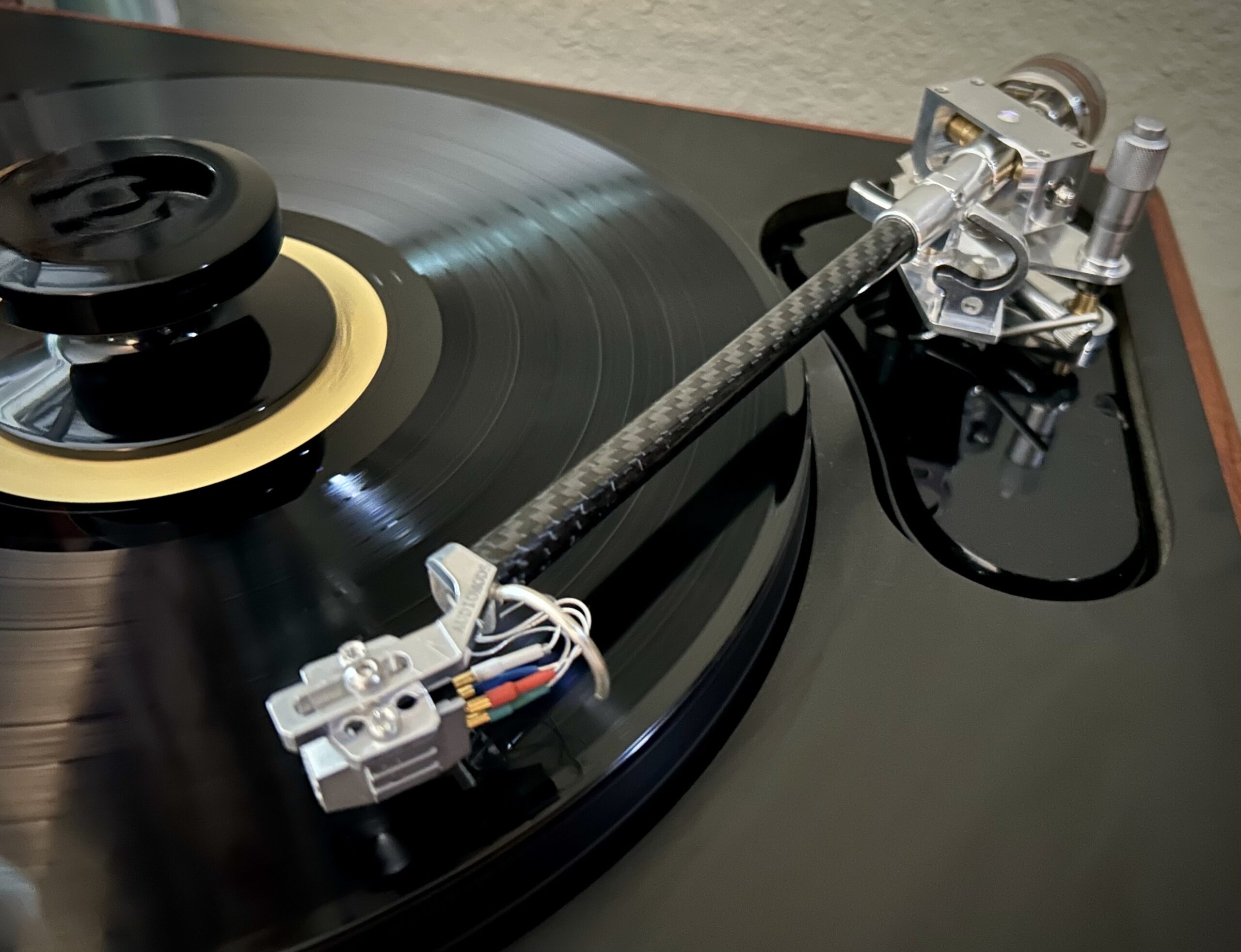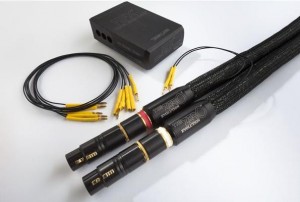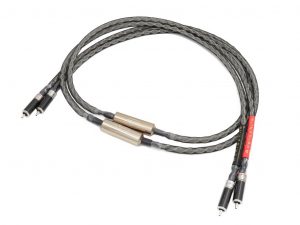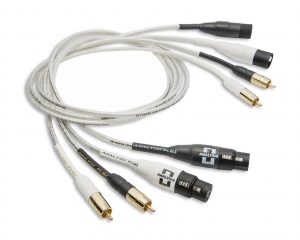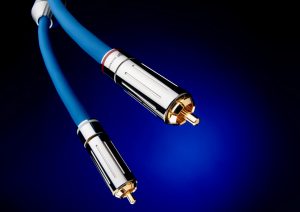I am staring out my window this afternoon, watching the snow fall and lay a blanket of shimmering white across my lawn, and touching every corner of our residential cul-de-sac. I sit here, marveling about how quiet my little corner of the city has become. You hear no cars, the neighbors are tucked in their homes, and even the deer that roam our development are nowhere to be seen. Living in a modestly sized Western Washington city means that true quietness, that absence of all noise, is a rare experience. For just this afternoon, when the refrigerator compressor shuts down, or the forced air heat goes into stand by, there is an absolute silence that you can sit and actively listen to. In our audio systems the injection of silence is a positive benefit, as the absence of system noise means that performers are presented with a higher degree of realism, the sound stage increases in size, instruments gather texture and nuance, and dynamic contrasts gain strength. Tara Labs has accomplished this feat with the RSC Air Evolution cable package, which contains a remarkable shielding arrangement utilizing external ground station boxes. What Tara Labs has accomplished is decrease the noise level inherent in a cable design to an extremely low level, and in doing so creates the equivalent to this afternoons snow blanket, forming a backdrop where instruments and vocalists can be enjoyed in a precise and multi-dimensional tapestry.
The core of the RSC Air Evolution interconnects utilizes Tara Labs Rectangular Solid Core conductors formed from high purity copper wire. The SA-OF8N® designation for the Tara Labs wire references an eight 9's purity of material, along with an annealing process that increases conductivity and improves wire flexibility. The design team has developed a state-of-the-art dielectric which is a combination of Teflon and an Aero PE filament; which results in a dielectric sheath that utilizes a significant portion of air in its formulation. The interaction between the RSC wire and dielectric is carefully optimized so the interconnect has a capacitance measurement of 6 pico-farads per foot of cable. Terminations are custom designed locking RCA plugs, or XLR ends.
The EVO Ground Station is a compact box built with a mil-spec aluminum alloy that is 18.23% heavier and stronger than aircraft grade aluminum. These specific metallurgical properties allow for the reduction of radio frequency interference and electromechanical resonance (EMI/RFI). The grounding box also contains a proprietary material called Ceralex, which is a combination of specific metals, other carefully selected elements, and a ceramic binding agent. The Ceralex essentially becomes a sink for the EMI/RFI noise channeled by the shield in the cable. There are a series of pins that allow for the connection of the ground box to the shield of each leg of the cable, and then creating a common ground at the box where all the unwanted magnetic hash is effectively absorbed and ultimately dispersed. In a conventional cable the shield is intended to keep noise from entering the conductors, while in this case the ground network routes the noise away from the cable which results in an interconnect with a fundamentally lower noise floor.
I have known about Tara Labs products since their inception and have owned the multiple pairs of the Air series interconnects several years ago. Given my positive experiences with the company I reached out to Tara Labs, and Devon Scott was kind enough to offer their three top cables for review. Ultimately, I chose the RSC Air Evolution package since it represents what I perceived to be the highest value in Tara's reference level products. A meter pair of the RSC Air Evolution cables with EVO Grounding Station sell for $2495. The package I received contained two pair of cables, one with XLR terminations and the other with RCA ends. The XLR went between a PS Audio BHK 250 Signature amplifier and a Plinius Audio Tautoro preamplifier. The second pair were installed between the Tautoro and an Audio Magic Kukama DAC. The EVO boxes were discretely tucked under the edge of my rack and were never obtrusive. The cables went through a 200-hour break in period, although I would say they settled in quite nicely at the 100-hour mark. A pair of JBL 4365 studio monitors are connected to the amplifier with a set of Wireworld Eclipse 8 speaker wire. A Mac Mini music server and PS Audio LANRover feed digital files to the DAC. A PS Audio P10 AC Regenerator provides clean power to all components through Pi Audio Group power cords. With the preliminary introductions out of the way we can now discuss what these unusual cables bring to my system, and believe me its been a fascinating exploration!
As for a bit of insight into my internal values about audio interconnects, my comfort level with cable purchases tops out at $1000 a meter, and truth be told I would be far more comfortable at $500 a meter if I had my druthers. While the PS Audio amplifier and Plinius preamplifier warrant high quality cabling, I have a personal uncertainty of what a $2500 interconnect could bring to the table, and would the level of improvement be worth an additional $1500 in my estimation? After the break in process of the RSC Air Evolution cables, I started my evaluation process with a few selections from John Gorka, such as "The Ballad of Jamie Bee" or "Night Is A Woman," (Jack's Crows; RCA Victor B000001316) both of which are on the Jack's Crows album. What I discovered is that the Tara Labs cable set a new standard of performance for my system, as Gorka's vocals had a newfound level of texture, presence, and refinement that I have never experienced with this collection of gear. There is a nimble turn of words and phrases in these cuts that bring Gorka into the room, yet a richness and resonant fullness to the deeper reaches of his voice that is enhanced. This is not a parlor trick of having a skewed frequency response within the upper midrange, but rather a fundamentally superior level of reproduction that until now I have never experienced with a set of cables. Overall the presentation of these songs still had a dark quality, which is inherent in the mix, but at the same time the top end extension was not altered, and the vocals were to die for. I have not heard a set of cables present music in such a holistic way, and if I had not heard it myself, I am afraid to say I would have had my doubts it was possible. Especially at this level of gear, and within the context of what would be considered an affordable high-performance system.
I also spent a great deal of time working through various songs from Dire Straits. Playing "Telegraph Road" (Love Over Gold; Vertigo 23728) with the RSC Air Evolution interconnects in the system presented this song with a marvelous spatial arrangement, and layer upon layer of depth being revealed. Certainly, this song is a studio creation, yet instruments are focused and anchored within the virtual soundstage in a way I have not heard from this disc before. Instruments such as acoustic guitar, piano, drum kit, and bass guitar have a genuine texture and feel to them, even though this is a multi-track mix. Mark Knopfler's vocals have an effect added during the recording, yet he still has a vivid and organic presence that cannot be ignored. The Tara Labs interconnects can present the elements of a finely crafted studio creation, and yet communicates the essence of the artists expression to the listener in a direct link that is formed by the unique abilities of this cable.
Tara Labs literature presents the RSC Air Evolution interconnects as an extended bandwidth design, and while many would expect this to be a descriptor of clarity within the high frequency arena, it also impacts the lower registers of music. These cables made their extended frequency range abundantly clear on "I Can See Clearly Now" (I Can See Clearly Now; Capitol Records B000S53Z61) by the Holly Cole Trio. The acoustic bass not only had power and authority, there is a remarkable degree of texture and fine detail to the instrument. The bass player takes up residence in the right-hand corner of the soundstage, while the light brush strokes of the percussionist are directly behind Cole's vocals. However, you can hear both performers layered over each other, with the drum kit distinctly occupying the acoustic space behind the vocals. Also, the venue is eminently believable in how it integrates will all three of the performers, and has all the subtle cues that define the space this song was recorded in. The RSC Air Evolution cables are expressive in the frequency extremes in a way few cables are, not only do they maintain a continuity in presentation throughout the bandwidth, they do not make compromises, or perform slight of hand parlor tricks to gain a further reach at the furthest reaches of a recording.
At the end of the day our stereo systems are about making the act of listening to music enjoyable. You can parse every engineering detail to the finest of points; or look for measurements to validate whatever position about the topic of wire you take in this hobby, but in the end our ears will tell us what sounds real, and if we can relate to the music being played on our systems. My final evaluation tool for the RSC Air Evolution interconnects is my heart, for even though these interconnects have impeccable specifications, this means little to me if these cables do not bring forth the essence and magic of music. The RSC Air Evolution interconnects pass this test with flying colors! "North Dakota" (Joshua Judges Ruth; MCA B000002OIY) is a duet my two of my favorite artists, namely Lyle Lovett and Rickie Lee Jones. On this song the interplay between these two is clearly evident, with both their vocals being immediate and densely textured with tone and harmonics, and an organic presence that is palpable. Lovett's acoustic guitar playing in immediate, and you can almost reach out and touch the body of his guitar, or visualize the percussionist lightly brushing the drum heads. In the end there is a natural feel to the RSC Air Evolution interconnects that must be experienced to understand. You can argue it's the wire geometry, or the EVO Grounding Stations, or the contribution of the proprietary dielectric used in this wire, but to me these are secondary points. For as my listening sessions stack up with these Tara Labs cables, I reach a deep level of satisfaction. In the end this contentment is the final arbiter for me, and how I conclude if a product is worth owning. I truly appreciate these cables, as the RSC Air Evolution package brings a unique set of strengths to my system.
Value for the dollar spent, isn't that a calculation we all make in this hobby? So often hobbyists quote the curve of diminishing returns, and how that guides them when evaluating a new acquisition. What I find interesting is that the longer a person is in this hobby, that tipping point in the curve of diminishing returns does not stay stationary; rather it happens to migrate as their audio systems undergoes a gradual refinement. I know this has happened for me over the course of my audio journey, as I felt at one time the crest of the curve of diminishing returns was $100 for a meter set of cables and then $200. Eventually this point moved to $500, and recently I honestly believed that interconnects over a $1000 a meter offered minimal improvements to what my system would be capable of conveying. However, my experience with the RSC Air Evolution interconnects and EVO Grounding Stations have completely shattered that belief for me. These Tara Labs interconnects have shown the performance ceiling for my system is significantly higher than I previously thought. The design team at Tara Labs have created an excellent wire geometry and combined it with a Teflon and Aero dielectric insulation. The EVO Ground Station is a noise sink composed of a closely guarded recipe of materials that Tara Labs calls Ceralex; which is housed in a mil-spec aluminum housing and designed to absorb destructive EMI/RFI energy. The architecture of the shielding system in the interconnects is given the task drawing noise away from the wire. The RCA ends are a locking style, and the XLR terminations are also nicely machined. The RSC Air Evolution interconnects have a holistic presentation to music, and just gets out of the way of the essence of the composition. The ebb and flow of notes ride in a current of emotion that the artist uses to convey thoughts and feelings; and the Tara Labs interconnects can present this aspect of the music. The RSC Air Evolution cables are not for every system or every person, however, if you value the inner light of music you should seek out a pair of two and give them a serious listen.
RSC Air Evolution interconnects
Retail: $2495 a pair
Tara Labs




